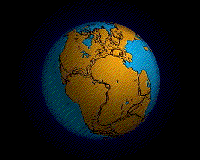 Scientists can't predict earthquakes. But toads might be able to.
Scientists can't predict earthquakes. But toads might be able to. In the spring of 2009, Rachel Grant, a doctoral candidate in life sciences at London's Open University, was studying a population of toads in a large dry lake in central Italy. Common toads reproduce once a year, sometimes traveling great distances to gather at their breeding grounds, and Grant was looking at whether her subjects were using the cycles of the moon to coordinate their romantic encounters.
In the previous three years, she had watched the toads increase in number with the waxing of the moon. But last year was different. The moon grew from crescent to gibbous, and suddenly the toads were gone. "It went from there being 90 to 100 toads down to six, and then to one, and then zero," says Grant. A few mating pairs hung around, but after two days, they too left. "It was so dramatic, I was trying to think of reasons why they might have gone," she says. "I was at a loss. Did somebody come and disturb them? Did somebody run through with a tractor? But that didn't seem right. Toads get run over by cars all the time, and that doesn't make them run away."
Five days after the toads disappeared, she had a possible answer: an earthquake struck in the middle of the night. The 6.3-magnitude quake was the deadliest to hit Italy in nearly 30 years, killing roughly 300 people and leaving tens of thousands homeless.


















